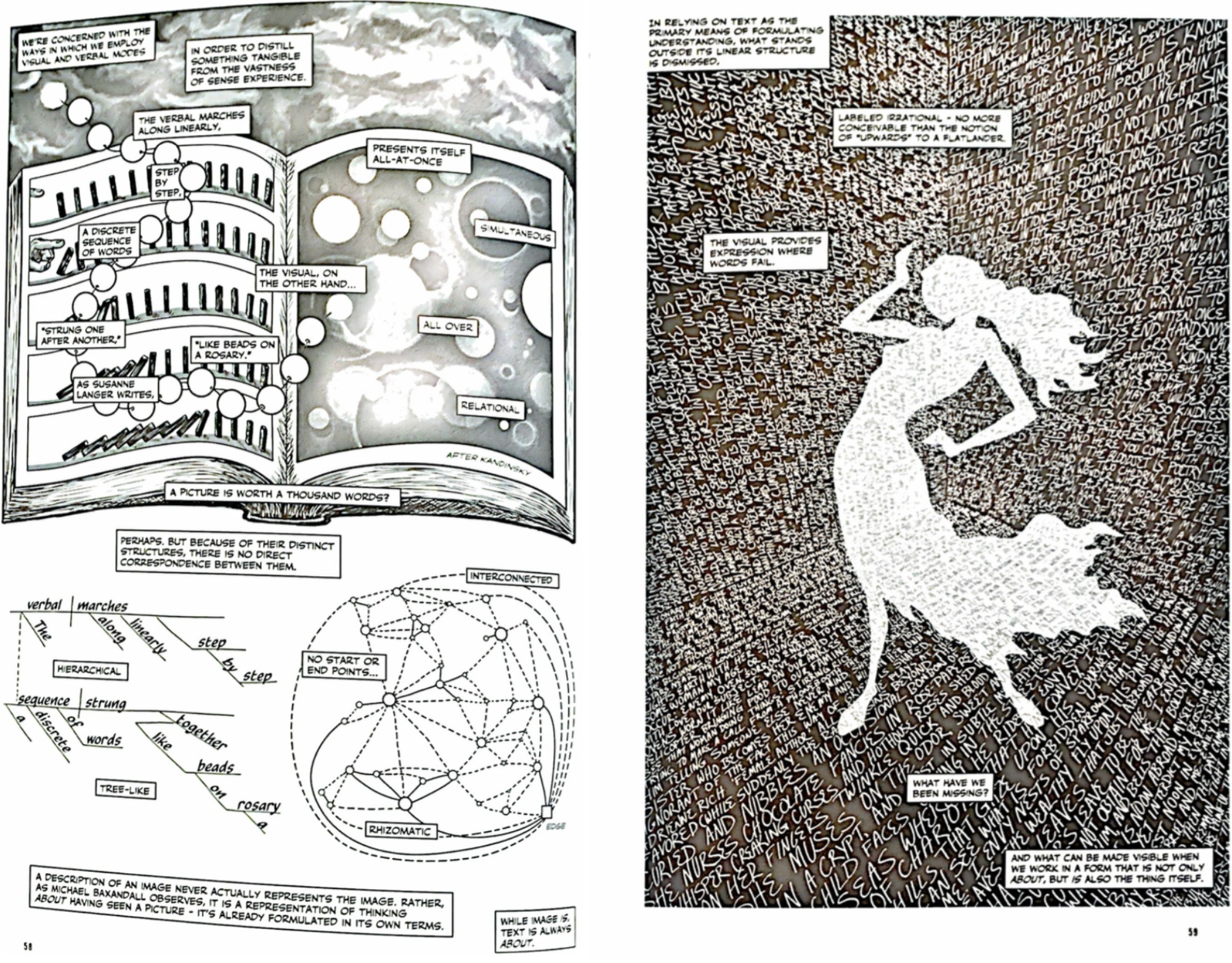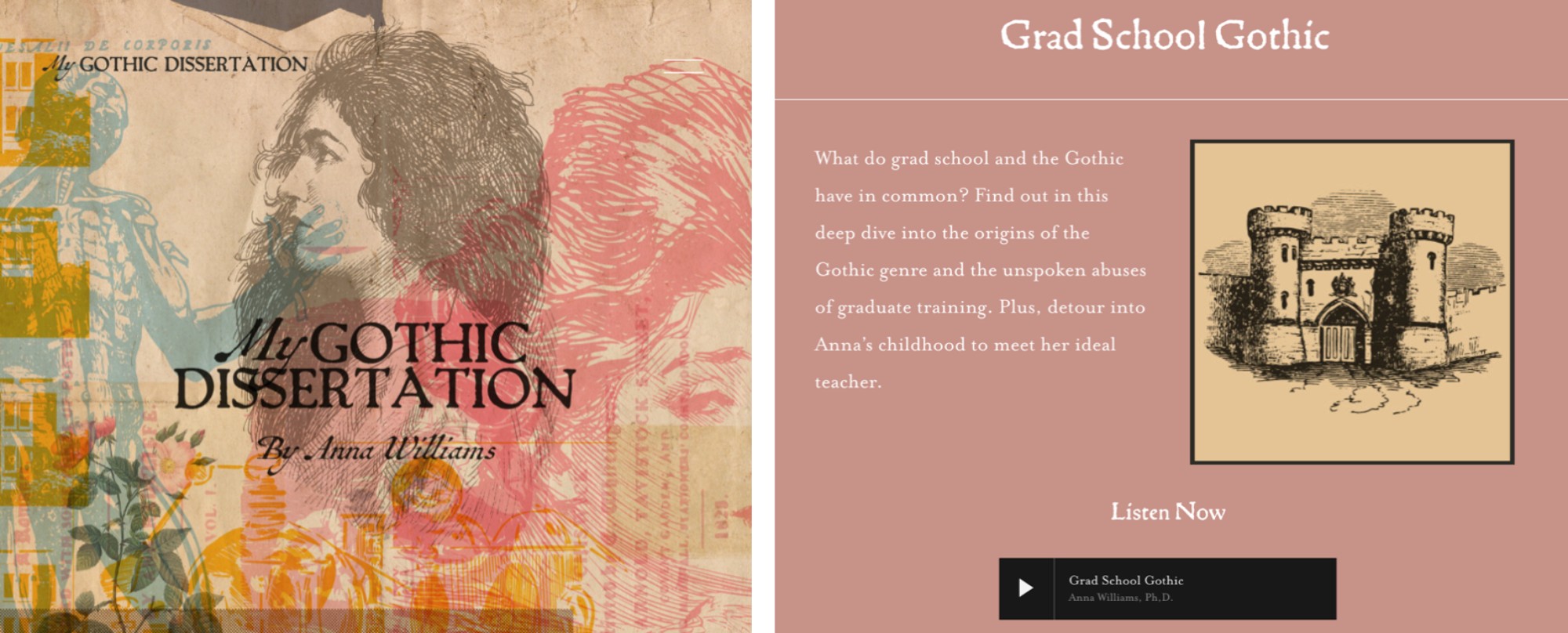Engaging and Citing Sources Multimodally
By Kyle Oliver
Introduction
Knowledge creation and dissemination is an inherently multimodal activity. Sometimes more and sometimes less intentionally, communicators pair a range of media with corresponding modes of discourse in myriad combinations, often with the aid of available technology (Lytle, 2013; Ong & Hartley, 2012; Standage, 2013). However, even in an age of accelerating media innovation and massive reconfiguration of higher education practices, researchers have been slow to abandon the normative pairing of text-based artifacts with analytic or argumentative expressive modes (Literat, et al., 2017; Ravelli et al., 2013).
I believe that this continuing imbalance is likely due in part to a lack of models both (1) for engaging and citing multimodal sources and (2) for engaging and citing any kind of sources within multimodal scholarship produced in non-traditional formats (e.g., media other than books and journal articles and modes other than argumentation and analysis). If it continues to be the case that the path of least resistance, even in multimodal scholarship, is always or primarily writing about other written texts, then we are likely to perpetuate the status quo.
The purpose of this brief overview is to support scholars seeking to publish work that engages with a wider range of scholarly artifacts. Drawing on four examples of multimodal research, including one of my own, I will outline promising practices for multimodal engagement and citation.
Unflattening by Nick Sousanis
Unflattening (Sousanis, 2015) is a book of argumentation and analysis. However, its engagement with and citation of sources is highly unconventional by traditional academic standards. Sousanis composed Unflattening in the format of a graphic novel. This text-with-images medium embodies the very message its argument develops: that choices about media representations and modes of expression significantly shape an artifact’s semiotic possibilities.

A representative two-page spread from Unflattening (Sousanis, 2015: p. 58–59)
Features of Approach
-
- Simultaneous deployment of text and images creates the possibility of dense, layered synthesis of ideas.
- In-text signal phrases and quoted material are presented in text boxes or directly within images, using spatial placement to indicate connections.
- Back-matter Notes section provides, on a page-by-page basis, standard in-text citation info and commentary on source texts and images.
- Back-matter Bibliography section explicitly addresses the text-centric “partiality” of reference sections and draws the reader’s attention back to the more image-centric Notes section.
Making Sweet Tea by E. Patrick Johnson and John Jackson, Jr.
Making Sweet Tea (Jackson & Gross, 2019) takes a nested, iterative approach to multimodal scholarship. It’s fair to call this documentary a film about a play (Johnson, 2020) about a book (Johnson, 2011) by scholar-performer Johnson. Here the multimodal engagement comes primarily from allowing the outer layers of later media (both the film and the play) to interrogate, re-present, and revisit the ideas, analysis, and especially participant narratives from the inner layers of earlier media (both the play and the book).

Stills from Johnson’s production gallery for Making Sweet Tea
Features of Approach
-
- The stage play presents participant narratives in an embodied way through Johnson’s dramatic performances.
- The film presents, supplements and further contextualizes select scenes from the stage play with footage and photographs of the participants themselves.
- The film’s interviews with original participants effectively comprise a follow-up study that deepens and in several cases renders significantly more dynamic their narratives and identity presentation.
- The film brings to the foreground Johnson’s own narrative, posture, and research methodology.
My Gothic Dissertation by Anna Williams
My Gothic Dissertation (Williams, 2019) inaugurates a new form of scholarly endeavor. The first-ever dissertation podcast, this work of audio scholarship plays self-consciously with format, genre, and mode of discourse as it interprets The Mysteries of Udolpho, Frankenstein, and Villette with respect to the modern-day horrors and pitfalls of navigating academia. Williams weaves together personal narrative with both literary and social analysis to compare the process of completing a dissertation to her protagonists’ own harrowing journeys of escape.

Screenshots from the My Gothic Dissertation website
Features of Approach
-
- Engages both the tone and content of Gothic novels within the podcast format by excerpting their audio books as part of analysis and sign-posting.
- Uses a dinging bell to indicate an academic citation, which can be referenced in the familiar way via each episode’s transcript.
- Incorporates contemporary contributions and scholarship through both original recordings and excerpts from scholars’ appearances in other media.
- Includes academic footnotes both in episode transcripts and directly via each episode’s landing page on the podcast’s website.
Becoming Tapestry by Kyle Oliver
I didn’t discover My Gothic Dissertation until I was preparing to defend my own dissertation podcast, Becoming Tapestry (Oliver, 2021). But I soon discovered that Williams and I had developed some similar techniques, largely in conversation with genre conventions from longform narrative podcasting. Becoming Tapestry also uses narrative storytelling to advance scholarly discourse, in this case engagement with field recordings and other data from a multi-year participatory ethnographic study. The result is a four-part audio documentary that answers the study’s research questions in the form of stories with and as analysis.

Roadmaps of Becoming Tapestry, with emphasis (right) on segments that engage literature
Features of Approach
-
- Relies heavily on the voices and insights of the most important sources in an ethnographic study—the participants themselves—through interwoven excerpts of field recordings and co-created research artifacts.
- Engages significant literature through podcast-style ad breaks (“This podcast is made possible by the work of …”) that excerpt scholarly sources and contextualize their research with audio pulled from conference talks and media appearances.
- Records citations in each episode’s script, the format of which is a hybrid of radio conventions and standard APA Style dissertation guidelines.
- Incorporates links to important visual and tabular data via short URLs shareable via narrator voiceover.
Conclusions
If there is a consistent pattern in the survey above, it’s that researchers must aggressively adapt scholarly conventions in order for the purposes of those conventions to operate effectively in media other than those for which they were originally developed. At least in the case of my work, the process began with the strategic (and passionate) choice of a medium that matched the priorities and rhetorical contours of my study. Once I had committed to rethinking the dissertation as a podcast, my subsequent choices about engaging and citing sources were usually motivated by the question “How can I accomplish what other scholars in my field will expect from this research, while still allowing Becoming Tapestry to be the best narrative podcast it can be?”
(Old Fashioned Text-Based*) References
* We play by the old rules to advocate for new rules!
Jackson Jr., J., & Gross, N. (Directors). (2019). Making Sweet Tea. SouthPaw Video Productions.
Johnson, E. P. (2011). Sweet tea: Black gay men of the South. University of North Carolina Press.
Johnson, E. P. (2020). Sweet tea: A play. Northwestern University Press.
Literat, I., Conover, A., Herbert-Wasson, E., Kirsch Page, K., Riina-Ferrie, J., Stephens, R., Thanapornsangsuth, S., & Vasudevan, L.
(2018). Toward multimodal inquiry: Opportunities, challenges and implications of multimodality for research and scholarship. Higher Education Research & Development, 37(3), 565–578.
Lytle, J. A. (2013). Faith formation 4.0: Introducing an ecology of faith in a digital age. Morehouse.
Oliver, K. (2022). Becoming Tapestry: A multimodal ethnographic podcast exploring storytelling and belonging in a faith-
adjacent foster youth mentoring network [EdD Dissertation]. Teachers College, Columbia University.
Ong, W. J., & Hartley, J. (2012). Orality and literacy (3rd ed.). Routledge.
Ravelli, L., Paltridge, B., Starfield, S., & Tuckwell, K. (2013). Extending the notion of ‘text’: The visual and performing arts doctoral
thesis. Visual Communication, 12(4), 395–422.
Sousanis, N. (2015). Unflattening. Harvard University Press.
Standage, T. (2013). Writing on the wall: Social media—The first 2,000 years. Bloomsbury Publishing USA.
Williams, A. (2019). My Gothic Dissertation: A Podcast [PhD Dissertation]. University of Iowa.